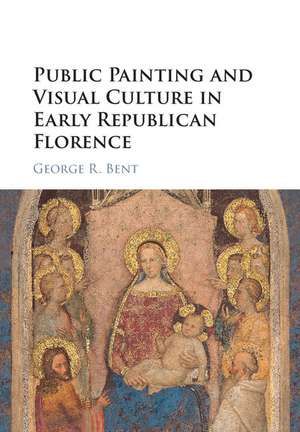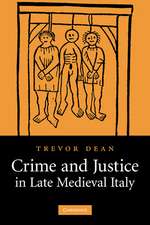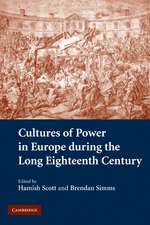Public Painting and Visual Culture in Early Republican Florence
Autor George Benten Limba Engleză Hardback – 15 ian 2017
Preț: 810.22 lei
Preț vechi: 942.12 lei
-14% Nou
Puncte Express: 1215
Preț estimativ în valută:
155.04€ • 165.79$ • 129.27£
155.04€ • 165.79$ • 129.27£
Carte disponibilă
Livrare economică 28 martie-11 aprilie
Preluare comenzi: 021 569.72.76
Specificații
ISBN-13: 9781107139763
ISBN-10: 1107139767
Pagini: 352
Ilustrații: 112 b/w illus. 68 colour illus.
Dimensiuni: 185 x 262 x 26 mm
Greutate: 1.24 kg
Editura: Cambridge University Press
Colecția Cambridge University Press
Locul publicării:New York, United States
ISBN-10: 1107139767
Pagini: 352
Ilustrații: 112 b/w illus. 68 colour illus.
Dimensiuni: 185 x 262 x 26 mm
Greutate: 1.24 kg
Editura: Cambridge University Press
Colecția Cambridge University Press
Locul publicării:New York, United States
Cuprins
Introduction: public painting for common people in early republican Florence, 1282–1434; 1. Paintings in the streets: tabernacles, public devotion, and control; 2. Images of charity: confraternities, hospitals, and pictures for the destitute; 3. Art and the commune: politics, propaganda, and the bureaucratic state; 4. Pictures for merchants: the guilds, their paintings, and the struggle for power; 5. Public painting in sacred spaces: piers and pilasters in Florentine churches; 6. Murals for the masses: paintings on nave walls; 7. Masaccio's Trinity and the triumph of public painting for common people in early republican Florence.
Recenzii
'We learn, here, not only of works of art, but of the people of the Florentine Republic - of condemned criminals, prostitutes, merchants, government officials, guild members from the Arte della Lana and the Arte dei Giudici e Notai, laudesi, plague victims, the bishop and his entourage, the families of the newly baptized, and the would-be tyrant - and of how these and others lived lives shaped by images in an urban environment before the era of art.' Jonathan Kline, Renaissance Quarterly
Notă biografică
Descriere
This book examines the way common people saw and interpreted paintings produced for - and placed in - public settings in fourteenth-century Florence.














